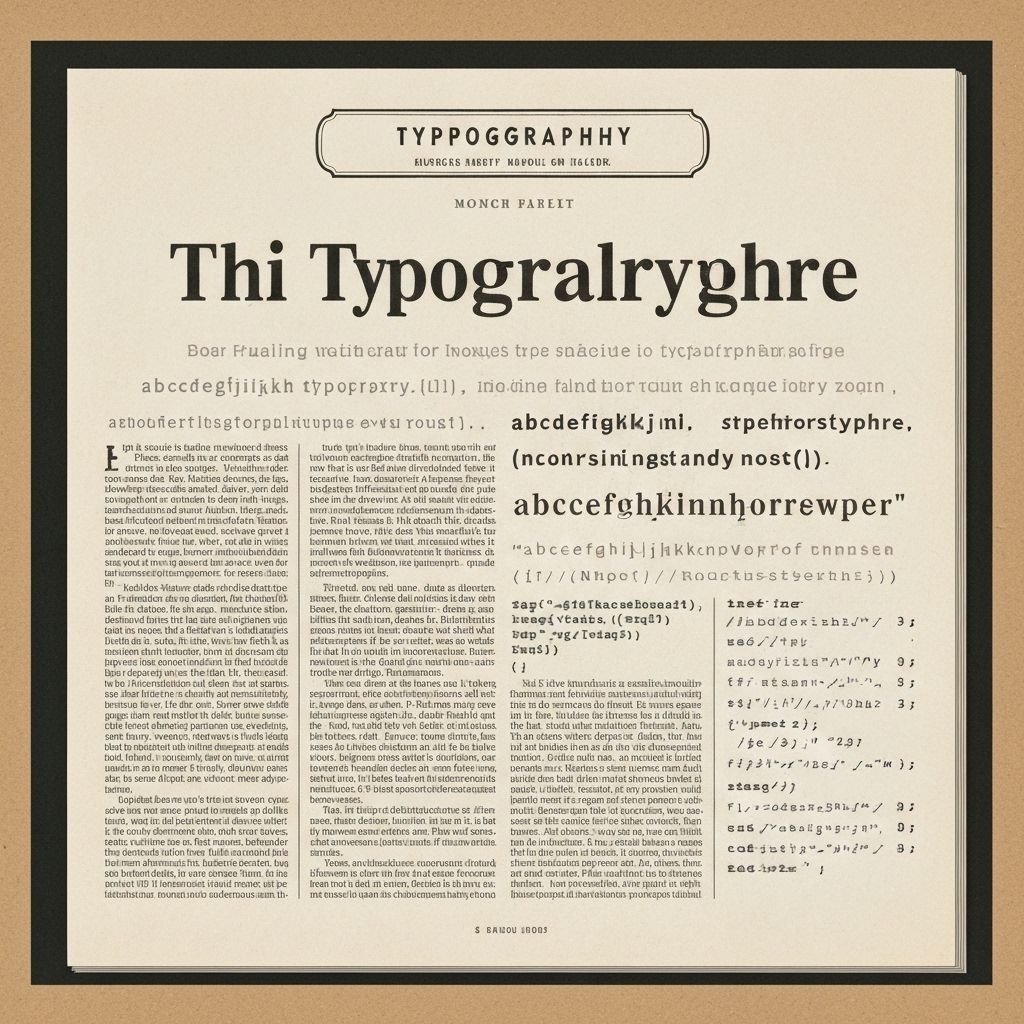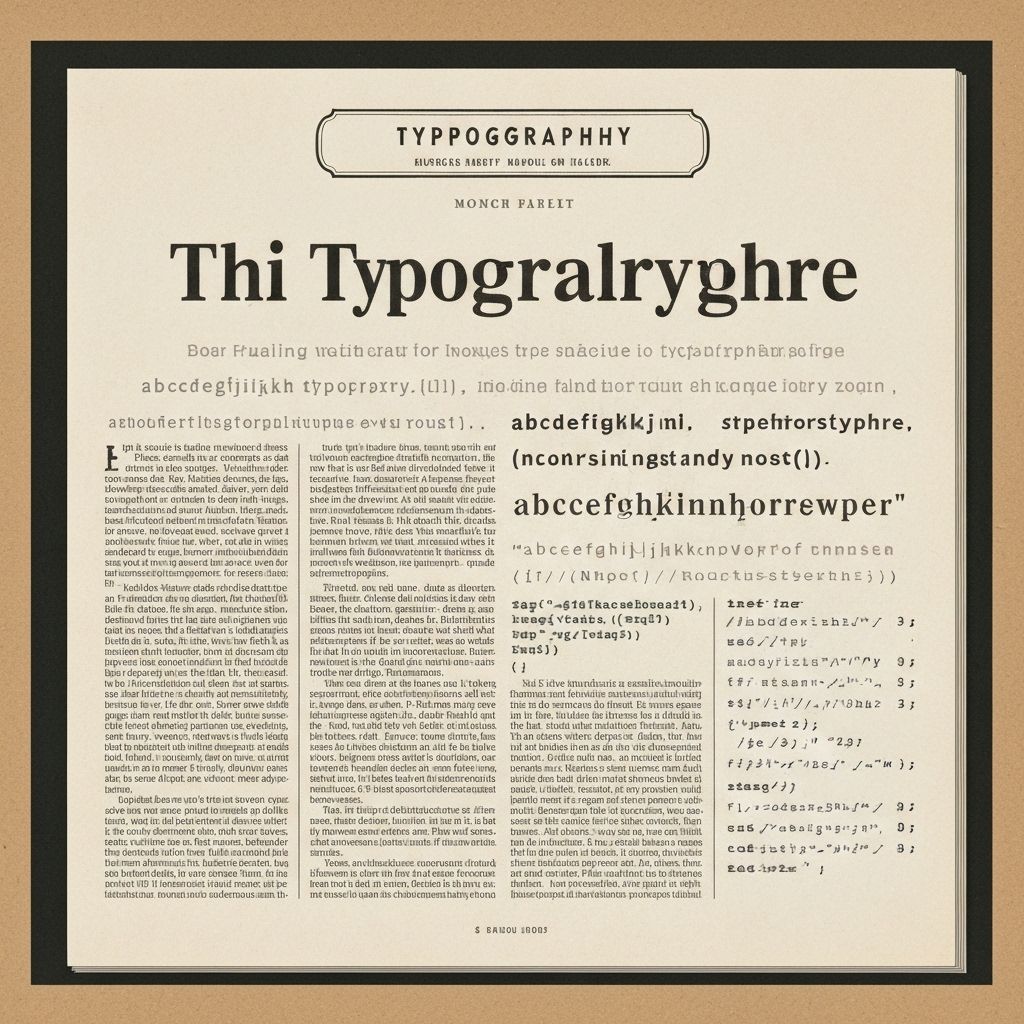How AI Font Recognition Technology Actually Works

Have you ever seen a beautiful font on a poster or website and wondered, 'What font is that?' Thanks to artificial intelligence, answering that question has become remarkably simple. But have you ever stopped to think about how AI can identify thousands of fonts in just seconds? Let's pull back the curtain on this fascinating technology.
The Challenge of Font Recognition
Identifying fonts might seem straightforward to humans—after all, we can usually tell the difference between Arial and Times New Roman at a glance. But teaching a computer to do the same thing? That's a whole different ballgame. Fonts come in countless variations: different weights, styles, sizes, and even distortions from angles, lighting, or image quality. Add in the fact that there are over 100,000 fonts in existence, and you've got yourself a serious challenge.
Traditional computer programs struggle with this kind of variability. They need explicit rules for everything, and writing rules to cover every possible font variation would be practically impossible. That's where machine learning comes in—instead of programming rules, we teach computers to recognize patterns on their own.
How Neural Networks Learn Fonts
Modern font recognition systems use something called Convolutional Neural Networks (CNNs). Think of these as digital brains that learn by example, much like how you learned to recognize fonts by seeing them over and over again. Here's how it works:
- Training Phase: The AI is shown thousands of examples of each font in different sizes, weights, and contexts. It's like showing a child flashcards, but on a massive scale.
- Pattern Recognition: The neural network learns to identify unique characteristics of each font—the curve of an 'S', the serif on a 'T', the spacing between letters.
- Feature Extraction: The AI breaks down fonts into mathematical features that humans might not even consciously notice, like stroke width ratios or curve angles.
- Classification: When you upload an image, the AI compares these features against its learned database and finds the closest match.
The Technology Stack Behind Font Recognition
A modern font recognition system isn't just one AI model—it's a sophisticated pipeline of technologies working together. First, computer vision algorithms isolate text from the background of your image. This is trickier than it sounds, especially with complex backgrounds or artistic layouts. Next, the system normalizes the text, adjusting for rotation, perspective, and lighting to create a standardized input for the neural network.
The core recognition model then analyzes the text using multiple layers of neural networks. Early layers detect simple features like edges and curves, while deeper layers recognize complex patterns like letter shapes and font characteristics. Finally, a confidence scoring system evaluates how certain the AI is about its identification, which is why you'll often see percentage scores with font matches.
Why Accuracy Matters
The best font recognition systems today achieve accuracy rates above 95% for clear images of common fonts. That's impressive, but why does that last 5% matter? In professional design work, using the wrong font—even a similar-looking one—can violate brand guidelines or licensing agreements. That's why modern systems don't just give you one answer; they provide confidence scores and alternative suggestions.
The technology continues to improve as AI models are trained on larger and more diverse datasets. Recent advances in deep learning have made it possible to identify fonts even in challenging conditions: low resolution images, unusual angles, or fonts that have been modified or customized.
The Future of Font Recognition
We're just scratching the surface of what's possible. Future font recognition systems will likely be able to identify custom or modified fonts, suggest similar alternatives when exact matches aren't available, and even generate new fonts based on style preferences. Some researchers are working on systems that can identify fonts from hand-drawn sketches or describe fonts in natural language.
The intersection of AI and typography is opening up exciting possibilities for designers, developers, and anyone who works with text. As these systems become more sophisticated and accessible, the barrier between seeing a font you love and using it in your own work continues to shrink.
Font recognition technology represents a perfect example of how AI can solve real-world problems that would be nearly impossible with traditional programming. By learning from examples rather than following rigid rules, these systems can handle the incredible diversity and complexity of typography. The next time you use an AI font finder, you'll know there's a sophisticated neural network working behind the scenes, trained on millions of examples, to give you that answer in seconds.
About Sarah Chen
AI Research Engineer specializing in computer vision and typography


